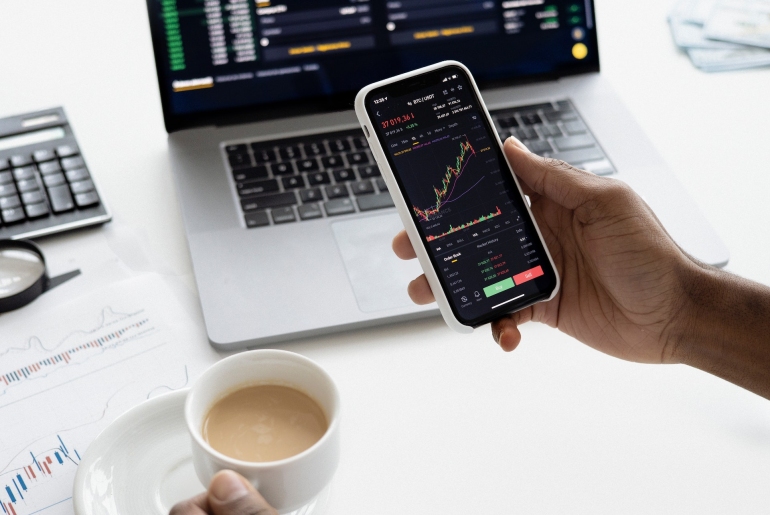This article may contain references to products or services from one or more of our advertisers or partners. We may receive compensation when you click on links to those products or services. Nonetheless, our opinions are our own.
As well as being useful trading instruments, options can be used to hedge and manage the risk in a trader’s stock portfolio.
Understanding Portfolio Hedging
Portfolio hedging involves employing financial instruments to offset potential losses in one asset class with gains in another. In the context of stocks, using options for hedging provides a way to protect the value of a stock portfolio against adverse market movements. Hedging may not eliminate risk entirely, but can dramatically reduce risk.
Hedge ratios and option prices can be valued using a derivatives valuation tool such as derivatives one in combination with a financial data provider like FirstRate Data
Basics of Options for Hedging
Options are financial derivatives that provide the holder with the right, but not the obligation, to buy (call option) or sell (put option) an underlying asset, such as stocks, at a predetermined price (strike price) within a specified time frame. By incorporating options into their portfolio, investors can construct strategies that act as insurance against potential losses.
Put Options for Downside Protection
Purchasing put options is the most commonly used strategy for hedging against potential declines in a stock’s value. By purchasing put options on individual stocks or a stock market index, investors can establish a “floor” for their portfolio’s value. If the market experiences a downturn, the gains from the put options can offset the losses in the portfolio.
Example: Imagine you hold a stock portfolio worth $100,000. Concerned about a market downturn, you purchase put options on an index representing the market. If the market declines, the value of your portfolio may decrease, but the gains from the put options can help cushion the losses.
Note that an alternative to purchasing a put option is to write (ie sell) a call option. Whilst this has has a similar payoff profile if the underlying asset is owned by the trader, writing options is usually only for large institutions due to the high margin requirements.
Covered Call Strategy
While put options protect against downside risk, covered call strategies can be used to profit on an existing stock holding. In a covered call strategy, investors sell call options on stocks they own. By doing so, they generate income from the option premium received in return for potentially sacrificing some gains if the stock’s price exceeds the strike price.
Example: Suppose you own 100 shares of XYZ Company, trading at $50 per share. You sell covered call options with a strike price of $55. If the stock’s price remains below $55, you keep the premium from selling the options. If the stock price exceeds $55, you might have to sell your shares at the strike price, missing out on potential gains beyond that point.
Challenges and Considerations
Cost of Options
Purchasing options involves paying a premium, which can reduce portfolio returns. Option prices are very sensitive to volatility which can be extremely hard to forecast, therefore the cost of running hedging strategies can be very unpredictable.
Margin Requirements
In addition to the upfront cost, if options are sold then there will be a requirement to post margin to cover potential losses to the option counterparty. Whilst this does not impact the profitability it does consume capital.
Basis Risk
Although options can closely replicate the profits/losses on the underlying stock or index, they may not exactly offset these due to some differences in the instruments (for example an option settles against the average price of a stock on the last trading day whereas the trader’s profit/loss is based on the closing price).
Complexity:
Options trading can be complex, especially for those new to the concept. Investors need to understand the mechanics of options, various strategies, and potential outcomes.

Reviewed and edited by Albert Fang.
See a typo or want to suggest an edit/revision to the content? Use the contact us form to provide feedback.
At FangWallet, we value editorial integrity and open collaboration in curating quality content for readers to enjoy. Much appreciated for the assist.
Did you like our article and find it insightful? We encourage sharing the article link with family and friends to benefit as well - better yet, sharing on social media. Thank you for the support! 🍉
Article Title: Using Options to Hedge Your Stock Portfolio
https://fangwallet.com/2023/08/15/using-options-to-hedge-your-stock-portfolio/The FangWallet Promise
FangWallet is an editorially independent resource - founded on breaking down challenging financial concepts for anyone to understand since 2014. While we adhere to editorial integrity, note that this post may contain references to products from our partners.
The FangWallet promise is always to have your best interest in mind and be transparent and honest about the financial picture.
Become an Insider

Subscribe to get a free daily budget planner printable to help get your money on track!
Make passive money the right way. No spam.
Editorial Disclaimer: The editorial content on this page is not provided by any of the companies mentioned. The opinions expressed here are the author's alone.
The content of this website is for informational purposes only and does not represent investment advice, or an offer or solicitation to buy or sell any security, investment, or product. Investors are encouraged to do their own due diligence, and, if necessary, consult professional advising before making any investment decisions. Investing involves a high degree of risk, and financial losses may occur including the potential loss of principal.
Source Citation References:
+ Inspo











































